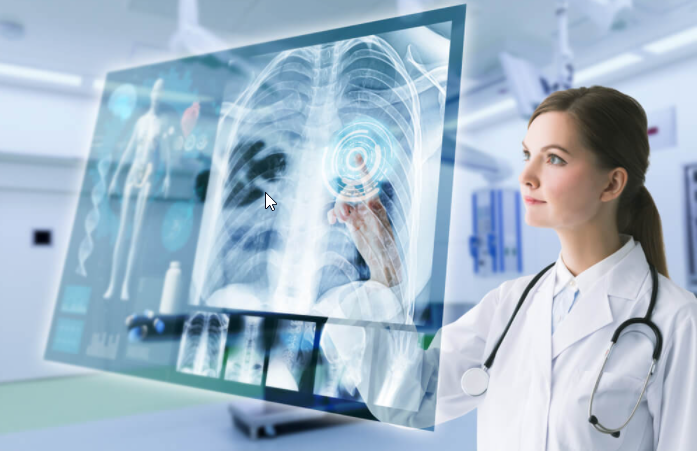Owing to these innovative technologies, delivering quality patient care has become far easier than it used to be. It has also brought about worth-mentioning cost savings and efficiencies. Big Data, in particular, has played a pivotal role in advancing diagnostics, while combining human reasoning and deep learning. Using analytics in a predictive manner, Bid Data has evolved as a game changer for the healthcare industry.
Before we enumerate 9 ways in which Big Data continues to transform healthcare, it remains imperative to outline the entire domain of Big Data for easier reference and understanding. Big Data is essentially a mix of various types of information which can be digitally analyzed through statistical methods. Since the healthcare industry by default generates voluminous data, ranging from patient records and lab results to medical research data and data generated by trackers and sensors, there is ample room for application of Big Data in healthcare. The ultimate objective remains to bring in cost efficiencies while delivering better patient care.
1. Electronic Health Records (EHR)
The U.S. healthcare industry is already ahead of others in terms of implementation of EHR for Small Practice. Transforming the entire process of maintaining patient data, from paper to digital records, EHR has made access to data far easier and faster. Practices are now able to access patient medical history simply at a click, on a tablet or a smartphone, immediately. This has not only enabled them to access past conditions but also keep track of treatments. Moreover, in case the patient switches the physician, the new physician need not go through the extensive and cumbersome process of history taking. He just needs to enter the patient code and the entire medical record is readily available.
2. Data Mining
Deploying EHR as the primary source of patient records and data, the physicians are able to perform deep learning algorithms for data mining purposes. Given the digitization of healthcare data, all patient data is stored on a cloud and is shared very conveniently between professionals across the medical community for multiple purposes – diagnosis, academic, research, etc. Similarly, the neural networks use the data stores in EHRs as input, scan through patterns and trends, and substantially reveal underlying connections. This then plays a vital role in early diagnosis and preventive treatment.
3. Predictive Analysis
Given the tendency of Big Data to identify similarities and patterns, predictive analysis is largely facilitated. The trends evident within the discrete data sets are used to make sense of lab tests and medical images to better understand pathology. At the same time, data analytics allow us to trigger warning signs before it is actually too late for an effective treatment. For instance, Big Data has proven highly useful in finding a cure for cancer and also in sounding the alarm early enough to avoid irrepressible growth of malignant cells. Tumor samples and images of skin patches are essentially used as training data for deep learning to identify mutations that could eventually lead to cancer.
4. Health Risk Management
Fitness trackers and sensors have radically transformed health risk management in recent times. Thanks to Big Data, personalized care plans, which are strictly patient-focused, allow better patient care in a much cost-effective manner. Instead of relying on costly techniques of applying standardized tests to sort out patient conditions, health risk management is easier done through fitness trackers to identify risks before they turn into diseases.
5. Telemedicine
While being around for quite some time now, telemedicine has gained the much-needed recognition and momentum in the wake of the COVID-19 pandemic. The state-of-the-art technological innovation has allowed healthcare professionals to deliver quality care at their optimal expertise across geographical boundaries. Incorporating sensors, trackers and real-time data flows, telemedicine has equipped physicians and specialties both to attempt remote diagnosis as well as remote treatment, with ease and expertise. This has also significantly expanded the access to health services for many.

6. Hospital Efficiency
Predictive analysis is particularly helpful in anticipating staffing and medication needs for the practices as well as the hospitals. It makes the healthcare professionals well-prepared to face any seasonal outbreaks, by better inventory management and by processing real-time algorithms and data to trigger low-level alerts and warnings to prepare ahead of time. Deploying techniques such as Six Sigma and Lean Methodology, hospitals are able to reduce inventory costs while successfully delivering quality care to their patients.
7. Predicting Cardiovascular Diseases and Mitigating Mortality Rate
Cardiovascular diseases remain the number one cause of deaths in the U.S. according to AHA estimates, an average of 2000 people in the US die everyday due to cardiovascular diseases. Big Data has significantly aided in cardiac monitoring, through the use of remote monitoring tools and smartphone apps, eliminating the need for in-hospital visits. Wearable self-adhesive devices allow remote censoring and transmission of value data to the practice, which expedites the response in the case of a cardiac emergency.
8. Developing Advanced Surgical Equipment
Apart from accelerating patient dare and providing easy access to patient data, Big Data has largely supported the design and development of advanced surgical equipment. Deploying predictive algorithms and machine learning, it has empowered the healthcare industry to not only effectively handle massive data pools but also simplify the process as it moves along.
9. Reduced Fraud and Enhanced Security
The healthcare industry is prone to 200% more data breaches than any other industry. The reason is simply the fact that personal data is highly valuable and, hence, equally vulnerable. Since any breach of this valuable information can lead to serious repercussions, healthcare organizations use Big Data to prevent security threats through encryption technology, firewalls, anti-virus software, and so forth. Moreover, analytics streamline the processing of insurance claims as well, enabling the patients to secure better returns on their claims.
All in all, Big Data has massive applications in the healthcare industry. It has proven itself in increasing the efficiency of the healthcare professionals while improving the quality of treatment and satisfaction of the patients.
Author Bio:
Summer Larson’s background in healthcare stretches over 11 years. He is a well-renowned health IT expert and contributes regularly to popular blogs and websites. She covers topics ranging from health reforms to the application of IT in healthcare. In 2013 he formed EMR Specialist, a company specializing in assisting providers with the adoption and implementation of electronic health records (EHR) and working with EHR vendors on usability and certification projects. Summer Larson is also an avid Star Wars fan.
